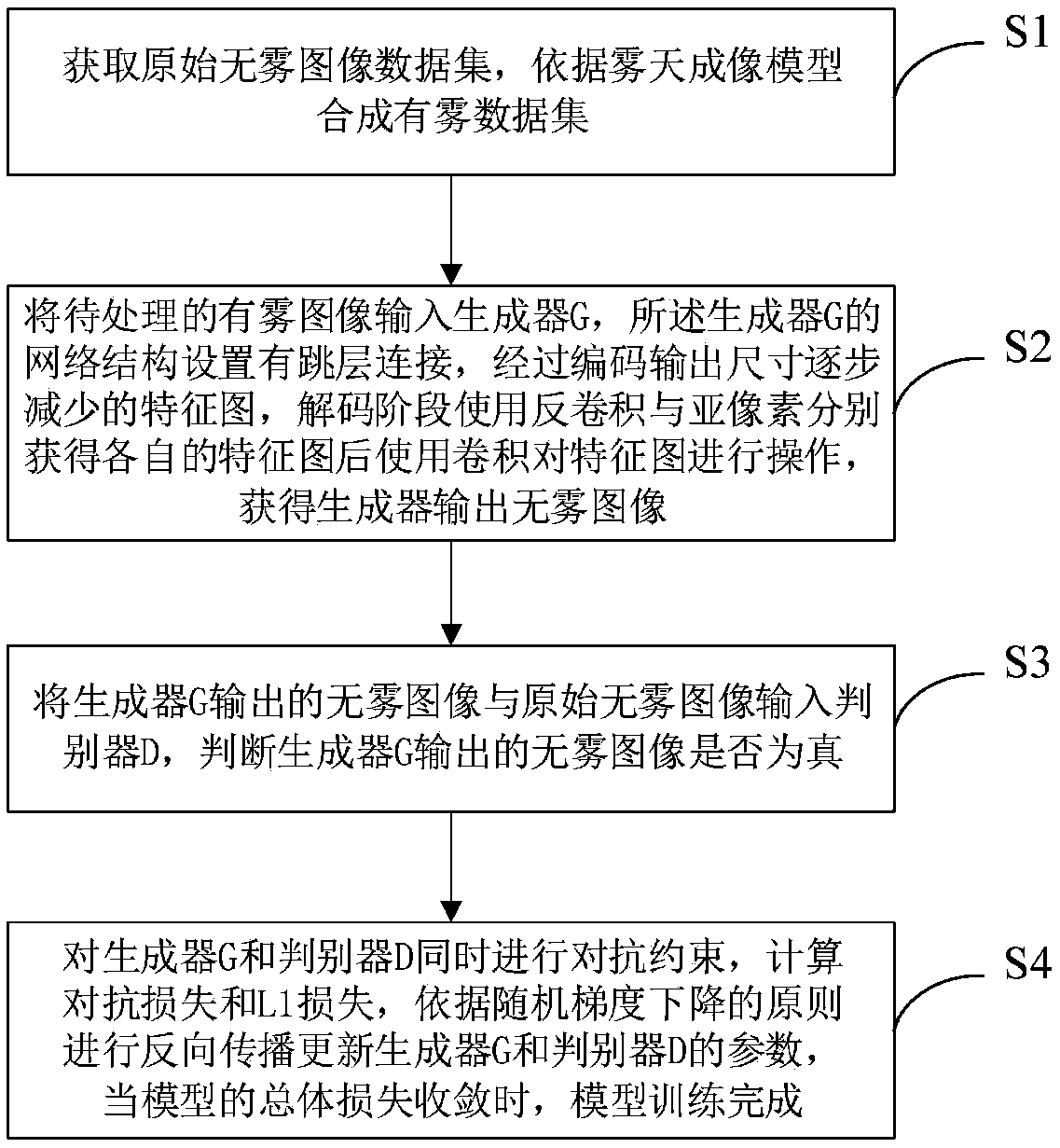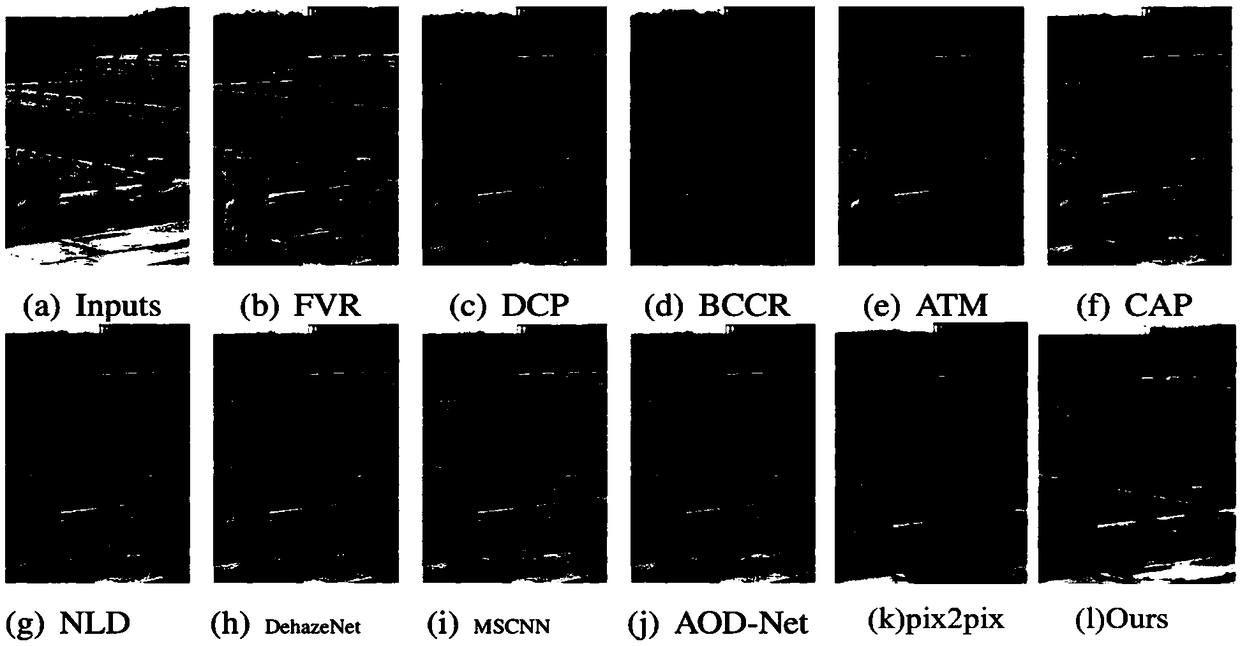Single image defogging method based on sub-pixel and conditional antagonism generation network
A sub-pixel and image technology, applied in the field of single image defogging, can solve problems such as joint estimation of t, poor processing, and insufficient image defogging effect, and achieve high-quality generation, good recovery, and good visual effects
- Summary
- Abstract
- Description
- Claims
- Application Information
AI Technical Summary
Problems solved by technology
Method used
Image
Examples
Embodiment 1
[0042] Such as figure 1 As shown, a single image dehazing method based on sub-pixel and conditional confrontation generation network, including the following steps:
[0043] S1. Obtain the original fog-free image dataset, and synthesize the foggy dataset according to the foggy imaging model;
[0044] S2. Input the foggy image to be processed into the generator G. The network structure of the generator G is provided with layer-skip connections. After encoding, the output size is gradually reduced. After using the feature map of the convolution to operate on the feature map, the generator outputs a haze-free image;
[0045] S3. Input the fog-free image output by the generator G and the original fog-free image into the discriminator D, and judge whether the fog-free image output by the generator G is true;
[0046] S4. Simultaneously perform confrontation constraints on the generator G and discriminator D, calculate the confrontation loss and L1 loss, and perform backpropagatio...
Embodiment 2
[0048] A method for dehazing a single image based on sub-pixel and conditional adversarial generative networks, including the following steps:
[0049] S1. Dataset collection: Collect indoor and outdoor fog-free images, crop them to a size of 256×256, and classify them according to indoor and outdoor categories.
[0050] S2, synthetic data set: According to the foggy day imaging model shown in formula (1), on the basis of original fog-free data set, synthetic fog data set, wherein t (x) represents the concentration of fog, in the present invention, for To make the model have better generalization ability, use different t(x) to synthesize foggy images with different concentrations.
[0051] S3. Input the foggy image (Input) in the data set into the generator G. The function of the generator G is to restore the fog-free image from the input foggy image. Therefore, it is necessary to restore the structure and structure of the original image as completely as possible. Details. I...
PUM
 Login to View More
Login to View More Abstract
Description
Claims
Application Information
 Login to View More
Login to View More - R&D
- Intellectual Property
- Life Sciences
- Materials
- Tech Scout
- Unparalleled Data Quality
- Higher Quality Content
- 60% Fewer Hallucinations
Browse by: Latest US Patents, China's latest patents, Technical Efficacy Thesaurus, Application Domain, Technology Topic, Popular Technical Reports.
© 2025 PatSnap. All rights reserved.Legal|Privacy policy|Modern Slavery Act Transparency Statement|Sitemap|About US| Contact US: help@patsnap.com



